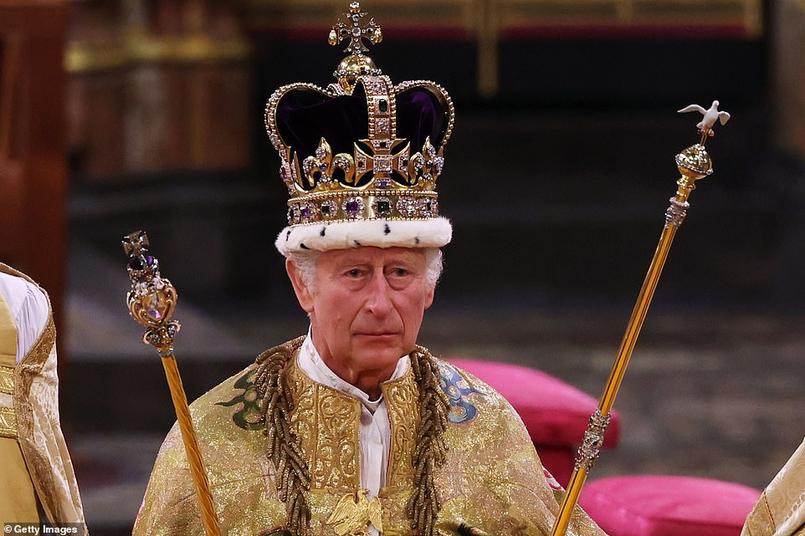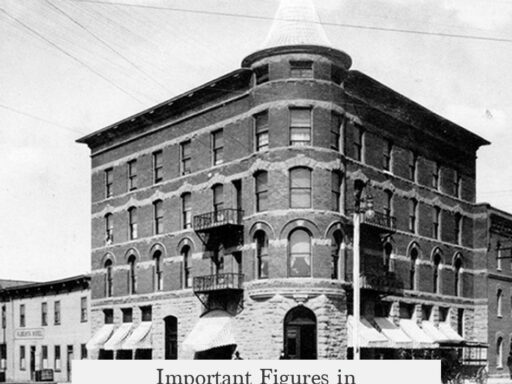King Arthur would have worn armor characteristic of the late 5th century, likely influenced by the late Roman Empire rather than the popular later Anglo-Saxon or Scandinavian styles often depicted in modern media.

The armor commonly associated with Arthur, such as the Sutton Hoo style, is anachronistic. It dates from the 7th century and includes Scandinavian influences, which postdate Arthur’s supposed era by generations. This style, featuring elaborate helmets and extensive use of arm and leg armor, reflects a later medieval culture rather than the immediate post-Roman period in Britain.
Historical and archaeological evidence suggests Arthur’s armor would have derived from late Roman designs fused with local adaptations. The helmet, a critical piece, would resemble known 4th to 6th-century Continental helmets rather than ornate Anglo-Saxon types like the Sutton Hoo helmet. Only one British helmet from the 6th century survives, and it mirrors continental helmets popular after Roman rule.

For example, helmets similar to 4th century Roman types were worn and evolved slowly in Britain and neighboring regions into forms seen in the 7th and 8th centuries. This continuity implies that a historical Arthur would have worn a practical, relatively simple helmet offering good protection without extravagant decoration.
| Armor Aspect | Likely Style for Arthur | Notes |
|---|---|---|
| Helmet | Late Roman style or Continental derivative | Simple design, durable, metal construction |
| Body Armor | Mail shirt if available; otherwise cloth or leather | Short-sleeved, reaching upper thighs; rare but possible |
| Arm and Leg Armor | Minimal or none | No solid archaeological evidence for limb armor in 5th century Britain |
Mail armor, while scarce in post-Roman Britain, is probably the best guess for a warrior of Arthur’s status if he had access to it. It may have been an heirloom piece or imported from the Continent. Such mail would be a thigh-length shirt with short sleeves, rather than the full suit of mail common in later medieval periods. No clear evidence supports the use of limb mail or other plate protection.

Limb armor was likely not worn in Arthur’s time. Archaeological data show no remains of forearm or leg protection for warriors in late 5th-century Britain. Thus, Arthur probably relied on helmet and body protection alone, with weapons and shields providing additional defense.
Besides metal mail, alternative armors might have included layered cloth or rawhide lamellar armor. These materials appear in regions further east but lack direct evidence in Britain at that time. Such armors would offer some protection while being lighter and more flexible than metal. However, their use by Arthur remains speculative without archaeological proof.

Descriptions of Arthur’s armor vary widely across different stories and eras. Arthurian legend is a composite of many sources, including early myths, medieval romances, and Renaissance retellings. These versions often depict wildly different armor styles, shaped by the culture and technology of the storytellers’ own time.
For instance, Thomas Malory’s 15th-century writings picture Arthur in plate and chain mail typical of his own period, not the 5th century. Earlier texts by Chrétien de Troyes or Welsh myths offer less detailed armor descriptions, focusing more on Arthur’s heroism than specific military equipment.

Stories romanticize and embellish Arthur’s appearance to fit narrative and symbolic needs. Whether in mythology or historical speculation, the lack of definitive archaeological finds prevents a precise reconstruction. The best approach considers the historical context of post-Roman Britain, combined with known military technology of the era.
- King Arthur’s armor likely derived from late Roman military equipment.
- Helmet would resemble simple 4th to 6th-century Roman or Continental designs.
- Mail armor possible but rare and typically short-sleeved and thigh-length.
- Little to no evidence supports arm or leg armor use in Arthur’s time.
- Alternative coverings like cloth or rawhide armor are speculative.
- Popular Arthurian imagery often reflects later medieval or Scandinavian styles, not historical reality.
- Armor depictions vary due to different Arthurian traditions and literary sources.
What Armour Would King Arthur Have Worn?

If you’re picturing King Arthur in shining plate mail, crowned helmet in place, charging into battle like a medieval superhero, you’re in for a surprise. The history—and myth—of Arthur’s armor is a different story. The armour likely worn by a real King Arthur in late 5th-century Britain contrasts sharply with the grandiose and ornate suits often portrayed in films and legends.
Let’s dive into the actual armor Arthur might have donned, separating myth from archaeological fact.
Armor and Time: Why Sutton Hoo Style Isn’t Arthur’s Look
The iconic, richly decorated Sutton Hoo helmet and armor are what pop into most minds when envisioning early English warriors. But it’s a historical mismatch for Arthur’s era. Sutton Hoo’s gear dates to the 7th century—several generations after Arthur’s supposed lifetime in the late 5th century. Moreover, Sutton Hoo armor shows strong Scandinavian influence from the Vendel period, particularly its arm and leg plates. Britain and Scandinavia had connections by then, but those styles were not yet established in Arthur’s day.
So, imagining Arthur sporting the Sutton Hoo ensemble is like imagining a caveman wearing a space suit–charming, but historically unlikely.
What Arthur’s Helmet Probably Looked Like
Historical sources point to Arthur’s armor bearing strong ties to late Roman military styles. The Roman Empire’s influence in Britain was waning but still culturally significant during Arthur’s estimated era. It makes sense that Arthur, or any Britannic leader striving for power, would have worn equipment inspired by or inherited from Roman designs.
We only have one surviving British helmet from the sixth century, closer to Arthur’s era, and it resembles helmets used on the European continent in the same timeframe. This points to a functional, less ornamental helmet than Sutton Hoo’s dazzling example.
One likely prototype is the fourth-century Roman helmet. This style, featuring a rounded skull cap and cheek guards, evolved subtly in Britain and influenced later Anglo-Saxon helmets. It was practical, offering protection with straightforward craftsmanship—perfect for warlords in a fragmented Britain.
Mail Armor? Maybe But Rarer Than You Think
What about body armor? Mail (chainmail) gets a lot of shout-outs in medieval stories. But in Arthur’s time, mail was uncommon in Britain. It was probably rare and expensive. If Arthur had access, it’s most likely he inherited it from Roman stock or acquired it through continental trade.
When mail was worn, it tended to be short-sleeved and thigh-length—enough to cover vital areas without restricting movement. Such armor provided reasonable defense against swords and arrows without the bulk of full plate armor, which didn’t exist yet.
On the bright side, this means Arthur probably wasn’t weighed down by clanky steel but moved with more agility than the popular image suggests.
Minimal Limb Armor: The Arms and Legs Were on Their Own
Curiously, there’s hardly any evidence for arm or leg armor in post-Roman Britain. So Arthur’s soldiers, if historically accurate, probably fought with exposed limbs or just padded clothing for protection.
Armor for forearms and legs came later with evolving warfare techniques. So, if someone pictures Arthur charging into battle with greaves and vambraces, that’s likely more myth than fact.
Other Armor Possibilities: Cloth and Rawhide
While not proven, some scholars suggest Arthur might have worn thick cloth armor or even rawhide lamellar, similar to what eastern warriors used. Rawhide lamellar involves overlapping strips of hardened leather tied together to form flexible, protective gear.
This armor type would have been lighter and silent—advantages in close quarters—but we lack direct evidence of its use in Britain during Arthur’s time. Still, the idea is plausible given the patchy historical record.
So, Which Arthur Are We Talking About?
There isn’t one “official” King Arthur—historians and storytellers differ widely.
- Are we discussing the historical leader who might have battled Saxons in the late 5th century?
- Or the romanticized Arthur from Chretien de Troyes’s poetry, clad in gleaming plate and majestic capes?
- Or the 15th-century version in Thomas Malory’s *Le Morte d’Arthur*, stylized for a medieval audience?
Your mental image of Arthur’s armor depends heavily on which story you choose.
To Wrap Up: What Would King Arthur Really Wear?
In reality, Arthur’s armor would likely have been practical, functional gear rooted in late Roman military tradition; think simple helmets and short mail shirts, not sparkling helmets covered with animal motifs and mythic polish. No heavy limb armor or ornate decorations popularized by later periods.
His helmet, probably a minimalist but effective late Roman style. His body armor, if any, could have been thigh-length mail or maybe some type of padded cloth or leather. And his arms and legs? Most likely unarmed or only lightly protected.
In other words, the real King Arthur was as much a product of the waning Roman world and early medieval Britain as he was a larger-than-life legend whose fantastical armor tells stories far beyond historical accuracy.
Isn’t it fascinating how one man’s suit of armor can offer a glimpse into history, myth, and the way stories shape our imaginations?




